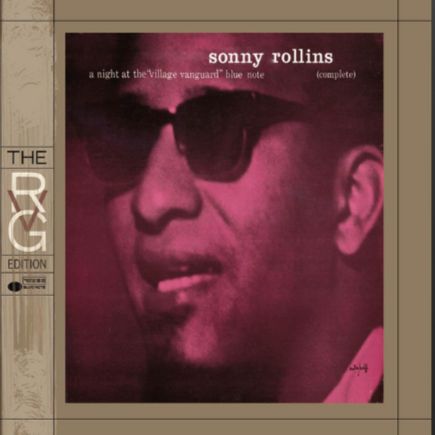A Night in Tunisia: une odyssée afro-cubaine au cœur du bebop
Composée en 1942 par le trompettiste Dizzy Gillespie (assisté par Frank Paparelli, pianiste de l’orchestre d’Earl Hines), A Night in Tunisia s’impose comme l’un des standards les plus novateurs du jazz moderne. Alliant les harmonies complexes du bebop à des rythmes d’inspiration afro-cubaine, la pièce incarne l’audace créative du jazz du XXe siècle et son ouverture à des influences extra-occidentales.
Dès les premières mesures, la mélodie obsédante et les motifs rythmiques syncopés plongent l’auditeur dans un univers sonore à la fois étrange et familier. Les boucles répétitives, les ruptures d’intensité et les tensions harmoniques évoquent des paysages lointains, teintés d’Orient et d’Afrique du Nord — une « Tunisie » rêvée, plus imaginaire que géographique.
C’est au Kelly’s Stable, à New York, que le morceau est joué pour la première fois au début des années 1940, lors de la collaboration de Gillespie avec Benny Carter. La première version chantée est enregistrée en 1944 par Sarah Vaughan, bien que le disque ne sorte qu’en 1946.
Sonny Rollins, la liberté du trio au Village Vanguard
Le 3 novembre 1957, Sonny Rollins signe au Village Vanguard de New York l’une des performances les plus marquantes de sa carrière et de toute l’histoire du jazz moderne. Enregistrée en direct pour l’album A Night at the Village Vanguard, la version de l’après-midi de A Night in Tunisia, avec Donald Bailey à la contrebasse et Pete La Roca à la batterie, révèle un musicien au sommet de son art, maître du risque et de l’improvisation libre. Une seconde prise, captée le soir même avec Wilbur Ware et Elvin Jones, complète ce témoignage exceptionnel, offrant deux lectures radicalement distinctes d’un même standard.
En 1957, Rollins est dans une phase de recherche intense. Il a volontairement abandonné le confort harmonique du piano pour se confronter à l’espace nu du trio, une configuration où la mélodie, la rythmique et la respiration s’entrelacent sans filet. Dans A Night in Tunisia, il s’empare du thème de Dizzy Gillespie et le reconstruit à sa manière, oscillant entre tension et relâchement, lyrisme et provocation. Le saxophoniste joue avec les silences, repousse la mesure, déforme les accents — chaque phrase semble naître d’une impulsion nouvelle.
Donald Bailey, d’un swing souple et discret, soutient l’exploration par des lignes fluides et ancrées, tandis que Pete La Roca, déjà habité d’un sens aigu du contrepoint rythmique, dialogue plutôt qu’il n’accompagne. Ce climat d’interaction constante fait de la performance un laboratoire sonore : les trois musiciens semblent inventer le morceau au fur et à mesure, en quête d’équilibre entre architecture et spontanéité.
A Night in Tunisia: una odisea afrocubana en el corazón del bebop
Compuesta en 1942 por el trompetista Dizzy Gillespie (con la colaboración de Frank Paparelli, pianista de la orquesta de Earl Hines), A Night in Tunisia se ha consolidado como uno de los estándares más innovadores del jazz moderno. Al fusionar las armonías complejas del bebop con ritmos de inspiración afrocubana, la pieza encarna la audacia creativa del jazz del siglo XX y su apertura a influencias no occidentales.
Desde los primeros compases, la melodía hipnótica y los patrones rítmicos sincopados sumergen al oyente en un universo sonoro tan extraño como familiar. Las repeticiones, las rupturas dinámicas y las tensiones armónicas evocan paisajes lejanos, teñidos de Oriente y del norte de África — una “Túnez” soñada, más imaginaria que real.
La pieza fue interpretada por primera vez a principios de los años cuarenta en el club Kelly’s Stable de Nueva York, durante la colaboración entre Gillespie y Benny Carter. La primera versión vocal fue grabada en 1944 por Sarah Vaughan, aunque el disco no fue publicado hasta 1946.
Sonny Rollins, la libertad del trío en el Village Vanguard
El 3 de noviembre de 1957, Sonny Rollins ofreció en el Village Vanguard de Nueva York una de las actuaciones más memorables de su carrera y de la historia del jazz moderno. Grabada en directo para el álbum A Night at the Village Vanguard, la versión de la tarde de A Night in Tunisia, con Donald Bailey al contrabajo y Pete La Roca a la batería, revela a un músico en la cima de su arte, dueño del riesgo y de la improvisación libre. Una segunda toma, registrada esa misma noche junto a Wilbur Ware y Elvin Jones, completa este testimonio excepcional con una lectura radicalmente distinta del mismo estándar.
En 1957, Rollins se encontraba en plena etapa de exploración. Había renunciado deliberadamente al confort armónico del piano para enfrentarse al espacio desnudo del trío, una configuración donde melodía, ritmo y respiración se entrelazan sin red de seguridad. En A Night in Tunisia, retoma el tema de Dizzy Gillespie y lo reconstruye a su manera, oscilando entre la tensión y la calma, el lirismo y la provocación. Juega con los silencios, desplaza los acentos, reinventa el pulso: cada frase parece nacer de una energía nueva.
Donald Bailey, con un swing flexible y contenido, sostiene la exploración con líneas fluidas y firmes, mientras que Pete La Roca, dotado de un sentido agudo del contrapunto rítmico, dialoga más que acompaña. Este clima de interacción constante convierte la actuación en un laboratorio sonoro: los tres músicos parecen inventar el tema mientras lo tocan, buscando un equilibrio entre estructura y espontaneidad.
A Night in Tunisia: un’odissea afrocubana nel cuore del bebop
Composta nel 1942 dal trombettista Dizzy Gillespie (con l’assistenza di Frank Paparelli, pianista dell’orchestra di Earl Hines), A Night in Tunisia si è imposta come uno degli standard più innovativi del jazz moderno. Unendo le armonie complesse del bebop ai ritmi di ispirazione afrocubana, il brano incarna l’audacia creativa del jazz del XX secolo e la sua apertura a influenze extra-occidentali.
Fin dalle prime battute, la melodia ipnotica e i motivi sincopati trasportano l’ascoltatore in un universo sonoro al contempo straniante e familiare. Le ripetizioni, le rotture dinamiche e le tensioni armoniche evocano paesaggi lontani, intrisi di suggestioni orientali e nordafricane — una “Tunisia” sognata, più immaginaria che reale.
Il brano fu eseguito per la prima volta all’inizio degli anni Quaranta al Kelly’s Stable di New York, durante la collaborazione tra Gillespie e Benny Carter. La prima versione cantata fu registrata nel 1944 da Sarah Vaughan, anche se il disco venne pubblicato solo nel 1946.
Sonny Rollins, la libertà del trio al Village Vanguard
Il 3 novembre 1957, Sonny Rollins firma al Village Vanguard di New York una delle performance più memorabili della sua carriera e della storia del jazz moderno. Registrata dal vivo per l’album A Night at the Village Vanguard, la versione pomeridiana di A Night in Tunisia, con Donald Bailey al contrabbasso e Pete La Roca alla batteria, rivela un musicista al culmine del suo percorso, maestro del rischio e dell’improvvisazione libera. Una seconda versione, registrata la sera stessa con Wilbur Ware ed Elvin Jones, completa questa testimonianza eccezionale offrendo due letture profondamente diverse dello stesso standard.
Nel 1957, Rollins attraversa una fase di intensa ricerca. Rinuncia volontariamente al comfort armonico del pianoforte per confrontarsi con lo spazio nudo del trio, una formazione in cui melodia, ritmo e respiro si intrecciano senza rete di protezione. In A Night in Tunisia, si appropria del tema di Dizzy Gillespie e lo ricostruisce a modo suo, oscillando tra tensione e rilassamento, lirismo e provocazione. Gioca con i silenzi, sposta gli accenti, modella il tempo: ogni frase sembra nascere da un impulso improvviso.
Donald Bailey, con uno swing morbido e discreto, sostiene l’esplorazione con linee fluide e radicate, mentre Pete La Roca, già dotato di un acuto senso del contrappunto ritmico, preferisce dialogare piuttosto che accompagnare. Questo clima di costante interazione trasforma la performance in un laboratorio sonoro: i tre musicisti sembrano inventare il brano mentre lo suonano, in un continuo equilibrio tra architettura e spontaneità.
A Night in Tunisia: an Afro-Cuban odyssey at the heart of bebop
Composed in 1942 by trumpeter Dizzy Gillespie (with assistance from Frank Paparelli, pianist in Earl Hines’s orchestra), A Night in Tunisia stands as one of the most innovative standards of modern jazz. Blending the complex harmonies of bebop with Afro-Cuban rhythmic influences, the piece embodies the bold creative spirit of twentieth-century jazz and its openness to global sounds.
From the opening bars, the hypnotic melody and syncopated rhythmic patterns immerse the listener in a soundscape that feels both exotic and familiar. Repeating motifs, sudden shifts in intensity, and harmonic tension evoke distant lands touched by Eastern and North African color — a “Tunisia” more imagined than geographic.
The piece was first performed in the early 1940s at Kelly’s Stable in New York during Gillespie’s collaboration with Benny Carter. The first vocal version was recorded in 1944 by Sarah Vaughan, though the record was not released until 1946.
Sonny Rollins, the freedom of the trio at the Village Vanguard
On November 3, 1957, Sonny Rollins delivered one of the most remarkable performances of his career — and of modern jazz history — at New York’s Village Vanguard. Recorded live for the album A Night at the Village Vanguard, the afternoon version of A Night in Tunisia, featuring Donald Bailey on bass and Pete La Roca on drums, reveals a musician at the height of his powers, a master of risk and spontaneous invention. A second take, captured that same evening with Wilbur Ware and Elvin Jones, completes this extraordinary document, offering two radically distinct readings of the same standard.
In 1957, Rollins was in the midst of an intense period of exploration. He had deliberately abandoned the harmonic comfort of the piano to confront the raw openness of the trio — a setting where melody, rhythm, and breath intertwine without safety nets. In A Night in Tunisia, he takes Dizzy Gillespie’s theme and reconstructs it in his own image, moving between tension and release, lyricism and provocation. He plays with silence, displaces the beat, reshapes the accents — every phrase feels born of a new impulse.
Donald Bailey, with his supple, understated swing, grounds the exploration with fluid, deeply rooted lines, while Pete La Roca, already showing a keen sense of rhythmic counterpoint, engages in dialogue rather than accompaniment. This atmosphere of constant interaction turns the performance into a sound laboratory: the three musicians seem to invent the piece as they play, seeking balance between structure and spontaneity.


